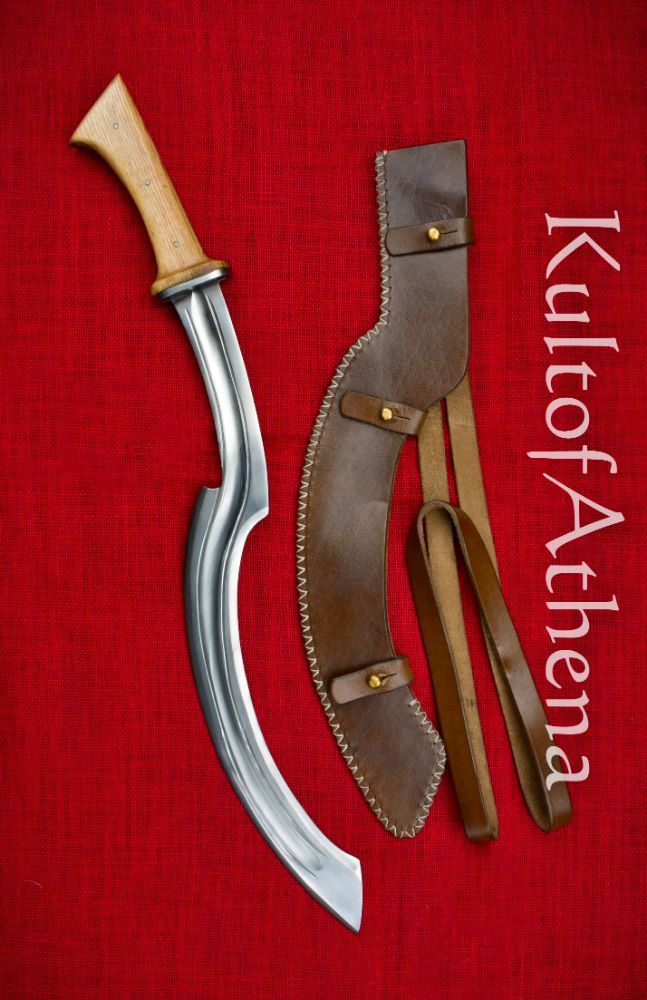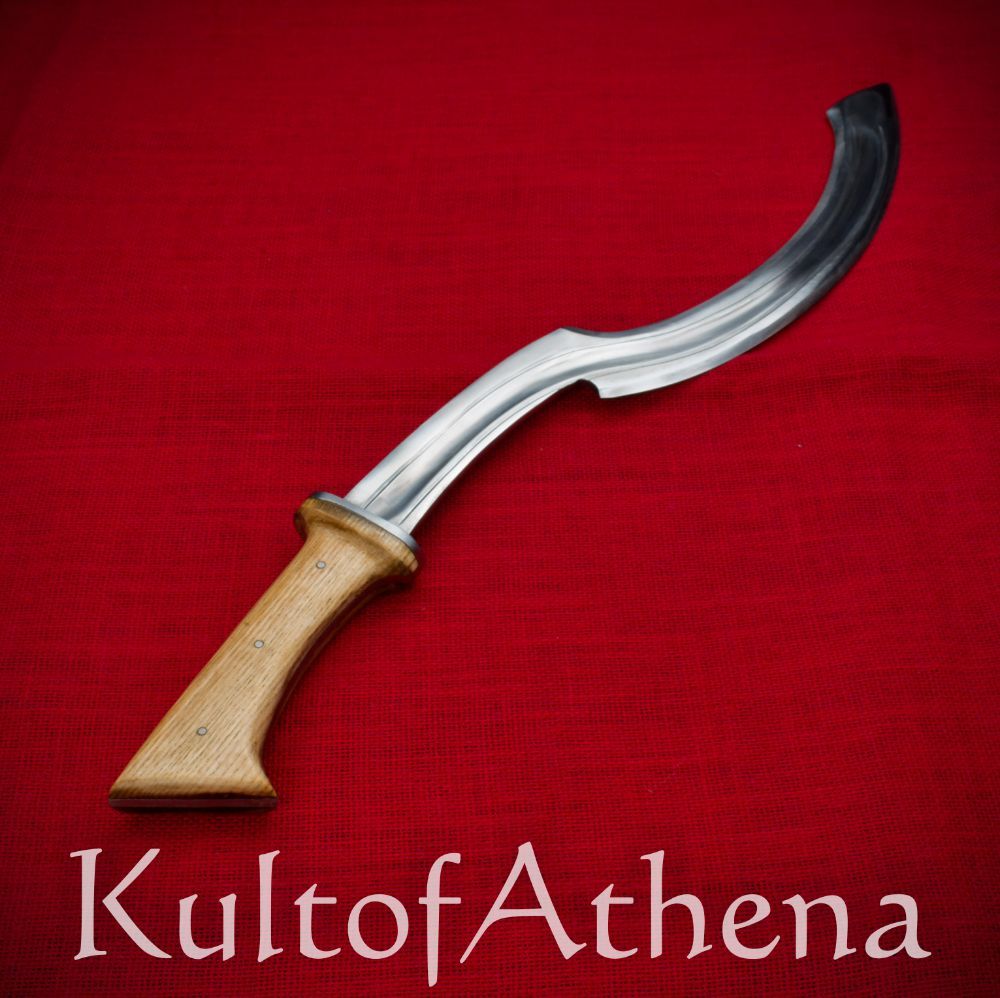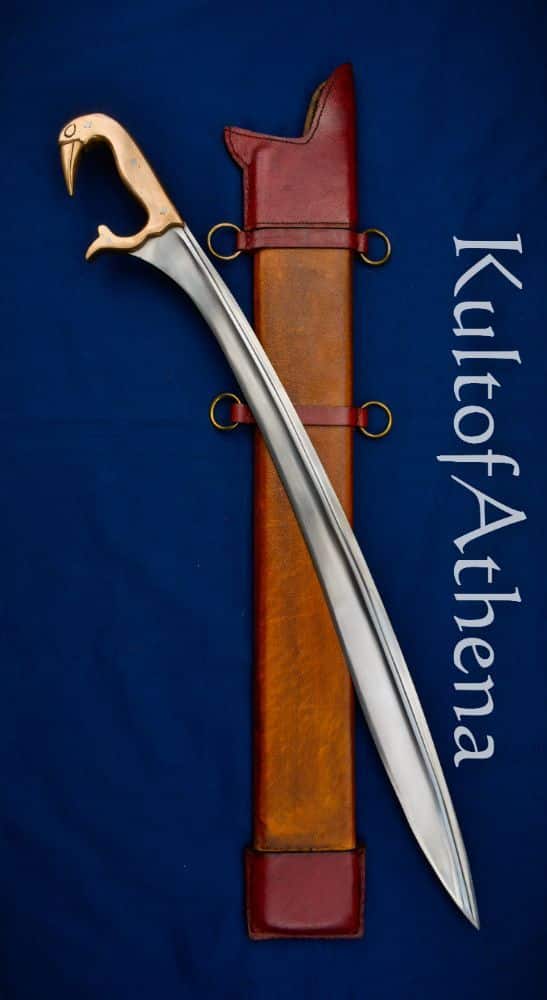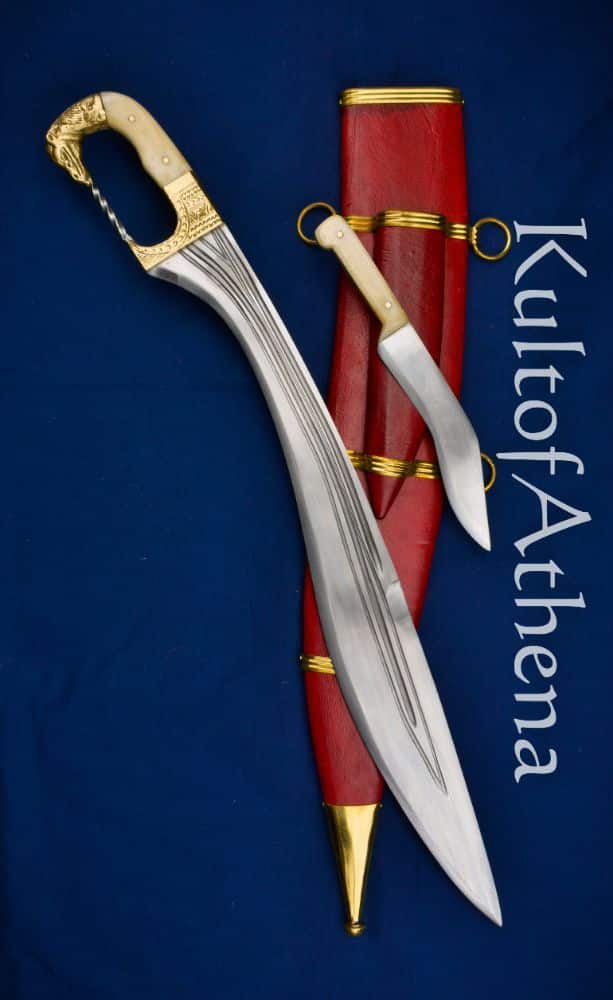The Ancient Egyptians, Greeks, and Iberians used the khopesh, kopis, and falcata to defend, protect and conquer. The three share similarities – storied histories, method of use and key design aspects.
Swords of the Ancients
- The Khopesh, Kopis and Falcata were all curved weapons.
- Primarily single-edged, although there are examples of Khopesh and Falcata that have partial or full double edges
- Their design optimized for delivering particularly powerful cuts and slashes in close combat.
Khopesh
A truly ancient sword design, the Egyptian Khopesh dates to about 2500 BC. Originally of Canaanite origin, the Khopesh may have evolved from the crescent axes common in the region or sickle-shaped agricultural tools used by ancient farmers. The weapon enjoyed some prestige, as a number of royal Egyptian tombs have been found with high quality Khopesh swords entombed within.
The sickle-like blade design of the Khopesh makes it a very capable chopping and slicing sword, and its blade was made of bronze or iron.
Artifacts can be seen in many museums, including a khopesh from approximately 1500 BCE acquired by the Royal Ontario Museum in the 1950’s.
Learn about the Deepeeka – Full Tang Egyptian Khopesh in the video:
Kopis
The kopis was developed in ancient Greece during the Archaic period, around the 6th century BCE.
- Used by Greek warriors in the Greco-Persian Wars, the Peloponnesian War and as a sword for the Macedonian Phalangite soldiers of Alexander the Great.
- This iron kopis was acquired by the Metropolitan Museum of Art in 2001 and is on display today.
The thick blade spine and forward-sloping, elongated tip of the of the Kopis combine to give it a chopping and hacking power more akin to an axe than a sword! Its thrusting potential can also be surprising and a good warrior could use that to his advantage as his foe may look at his sword and expect a slash or a cut instead of the thrust.
The Greek warriors who bore the Kopis into battle could expect it to reliably carve into the helmets and armor of their foes – should a Kopis meet the rim of a shield it would not be surprising if the weapon would rend great notches and gouges onto the shield rim and body.
The shorter length of the Kopis was probably not a great issue as the spear was the primary weapon of the battlefield – The sword was to be used when spears became impractical for the front ranks of phalanxes which had become closely entangled.
Some early Kopis were actually quite long, nearly the size of a Spatha in length, though they likely had a thinner spine and a less pronounced elongation of the tip in order to ensure the weapon did not become unwieldy. It was with the dominating ascent of the Macedonian Phalanx that the shorter and thicker chopping Kopis became the preferred form.
The Athenian-born historian and mercenary soldier Xenophon remarked in his work On Horsemanship that: I recommend a kopis rather than a xiphos, because from the height of the horses back the cut of a machaira will serve you better than the thrust of a xiphos.
Learn about the Deepeeka – Korfu Greek Kopis in the video:
Falcata
The falcata was developed in the Iberian Peninsula during the Iron Age, around the 5th century BCE.
- An iconic and powerful sword of the Classical ancient world, the Falcata with its deep recurve blade bites deeply into a target and separating it with ease with its widened tip.
- The contoured and well-formed grip is fashioned to snugly fit the hand and by maximizing contact between the hand and grip from as many surfaces as possible it makes it less taxing on the hand to wield the blade and truly allows the full power of the arm and forearm to help power the sword in the strike
- It was used primarily by the Iberian tribes, but it also became popular among the Celtiberians and eventually the Carthaginians who adopted it from their Iberian contacts.
- The falcata was most famously used by the Iberians tribes who put up a fierce resistance against the Roman Empire. Many Roman Legionaries feared its chopping power, which could cleanly split through their helmets in a powerful blow.
Learn about the Deepeeka – Horse Head Iberian Falcata in the video:
A testament to the power of the Falcata is found in Seneca’s De Beneficiis 5.24:
“A veteran who had been a bit too rough with his neighbors was pleading his case before Julius Caesar. “Do you remember,” he said, “Imperator, how you twisted your ankle near Sucro?” When Caesar said he did remember: “Then you certainly remember that when you were lying to rest under a tree that was casting just a tiny shadow, in a very tough terrain with just that one lonely tree sticking out, one of your men laid out his cloak for you?”
Caesar said “Why shouldn’t I remember, even if I was exhausted? Because I was unable to walk I couldn’t go to the nearby spring, and I would have been willing to crawl there on hands and knees, if it were not for a good soldier, a brave industrious chap, hadn’t brought me water in his helmet?” to which the man replied,
“Then, Imperator, you could recognize that man, or that helmet?” Caesar answered that he couldn’t recognize the helmet, but certainly the man, and added, a bit irritated I think, “And you certainly are not him!” “It’s not surprising,” said the man, “that you do not recognize me, Caesar; for when that happened I was whole. Afterwards, at Munda my eye was gouged out, and my skull smashed in. Nor would you recognize that helmet if you saw it: it was split by a Hispanian sword (machaera Hispana).”








Leave a Reply